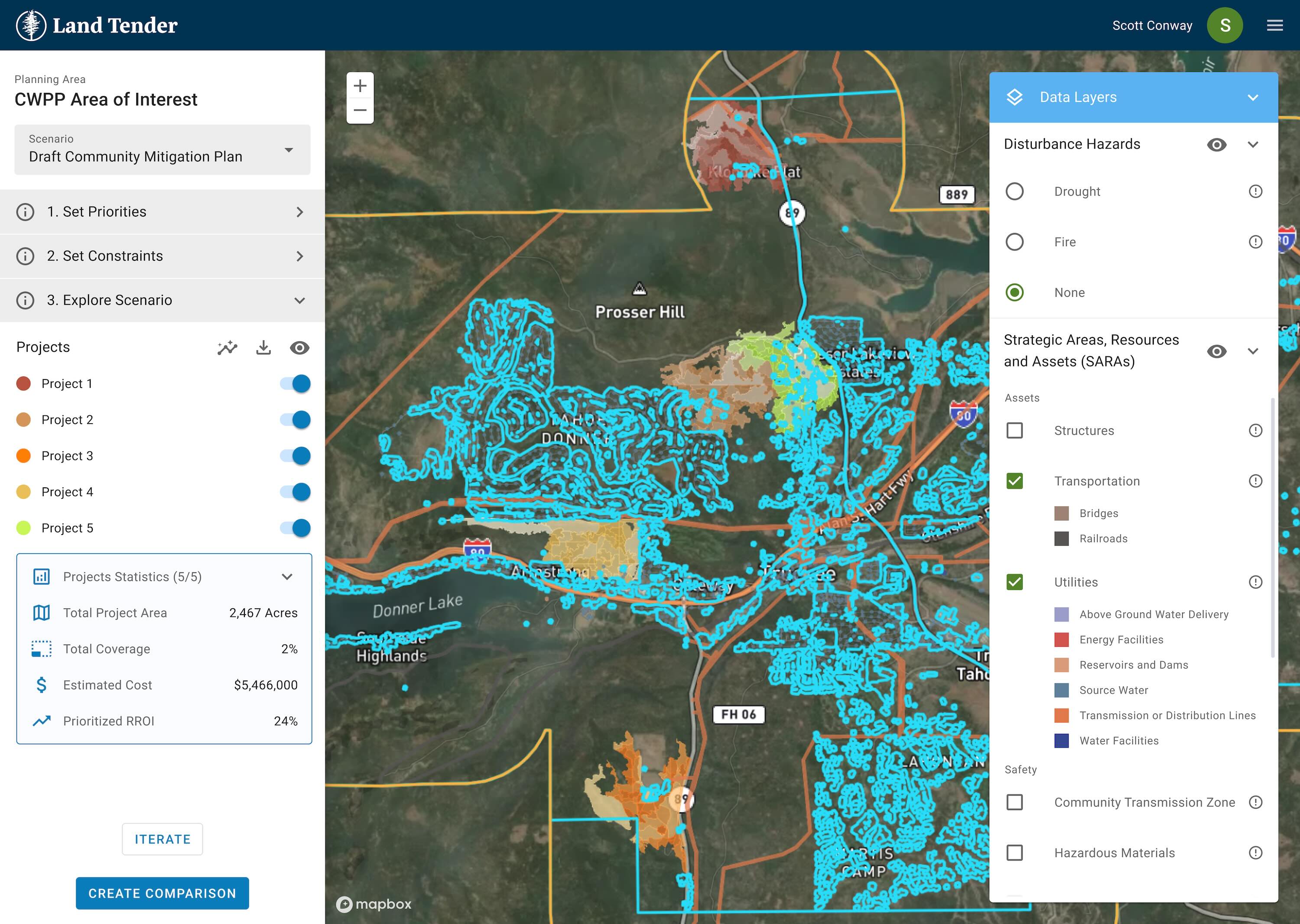Natural disasters have a way of making people pay attention. Take, for example, California’s recent, catastrophic wildfire seasons, which broke records for how many acres they burned, how much property they destroyed and how many lives they took. That, plus the way they turned the sky a shade of apocalyptic orange, grabbed people by the lapels and didn’t let go.
The ordeal inspired more than a few people to search for solutions. Vibrant Planet was one that grew out of California’s wildfires. TechCrunch covered the company’s seed round, and now the startup is back with fresh funding.
Vibrant Planet has raised a $15 million Series A funding round led by the Ecosystem Integrity Fund, with participation from Microsoft’s Climate Innovation Fund, Citi Ventures, Day One Ventures, SIG Climate, Globivest, Coefficient LP and other investors. That comes on top of the $17 million in pre-seed and seed funding the company announced in June 2022 as well as some government grants, bringing the total raised to $34 million.
Last year, I found the idea of an ecological SaaS refreshing, though I wasn’t sure it would have the potential for the sort of breakneck growth that venture capital firms like to see. Call it skepticism by familiarity: I was trained as a landscape ecologist and spent five years studying California’s oak woodlands; before that, I did a bit of fire modeling as part of a small research project. I’m still close enough to the topic to understand that environmental issues are often treated, and funded, more like footnotes than keynotes. Historically, it’s not been the most remunerative sector.
In the last five years, though, that’s started to change. Disasters like California’s wildfire season have forced a slow awakening upon the world and, more specifically, the U.S. Call it trial by wildfire, hurricane, heat wave, drought or flood. Take your pick.
But are enough people taking the climate threat seriously that a startup focused on wildfire management could succeed? As is the case with any Series A company, it’s probably too early to make any firm predictions. Yet I’m cautiously optimistic, and it’s not because the company has a fatter bank account.
One thing in particular caught my attention in my conversation with Allison Wolff, co-founder and CEO of Vibrant Planet: The startup has signed a deal with PG&E, the utility responsible for some of the worst fires in California history.
Previously, Vibrant Planet’s customer base included governments and nonprofit organizations mostly focused on land conservation and species preservation. All worthy customers, but nonprofits don’t tend to spend as much as for-profits, and government agencies have long sales cycles.
PG&E, though, is a large company worth about $38 billion. Its service area spans 70,000 square miles of some of the most wildfire-prone landscapes in North America. Few companies have experienced climate risk like PG&E, though it’s probably just the tip of the iceberg. Risk is spreading throughout the utility sector, as Hawaiian Electric Industries recently discovered in the wake of the Maui wildfires.
PG&E, Wolff said, is “a very natural partner, because they are big landowners; they have a lot of at-risk infrastructure they need to protect in a concerted interest in reducing fuel beds to help with that catastrophic fire problem.”
Vibrant Planet primarily sells a SaaS package it calls Land Tender. It gives organizations access to remotely sensed data, including satellite and lidar data, as well as tools to understand how different approaches to managing a landscape could affect the ecosystems they contain. That includes everything from the plants and animals that live there to how they interact with the land, water and each other.

Land Tender Image Credits: Vibrant Planet
A lot of those functions can be done with existing tools like ESRI’s ArcGIS, but having a cloud-based tool pre-populated with data certainly makes things easier. Plus, prices for Land Tender are based on the number of acres an organization wants to manage rather than on a per-seat basis. That should make it easier to bring more stakeholders into the project. (Land Tender is being used on 7 million acres, larger than the state of Vermont.)
The company has hired an impressive science team, with people from academia, the U.S. Forest Service, Bureau of Land Management and NASA. They’ve been working on many of these problems for years.
Vibrant Planet isn’t announcing any other major corporate customers yet, but Wolff said the company is in talks with other utilities. And utilities are probably just the start. Any organization that’s substantially exposed to wildfire-adapted ecosystems, which represent about half of all terrestrial ecosystems, could probably benefit from wildfire forecasting and mitigation.
Will they wake up to the risk in time or suffer the fate of PG&E and Hawaiian Electric? That’s up to them, but at least they have options.
